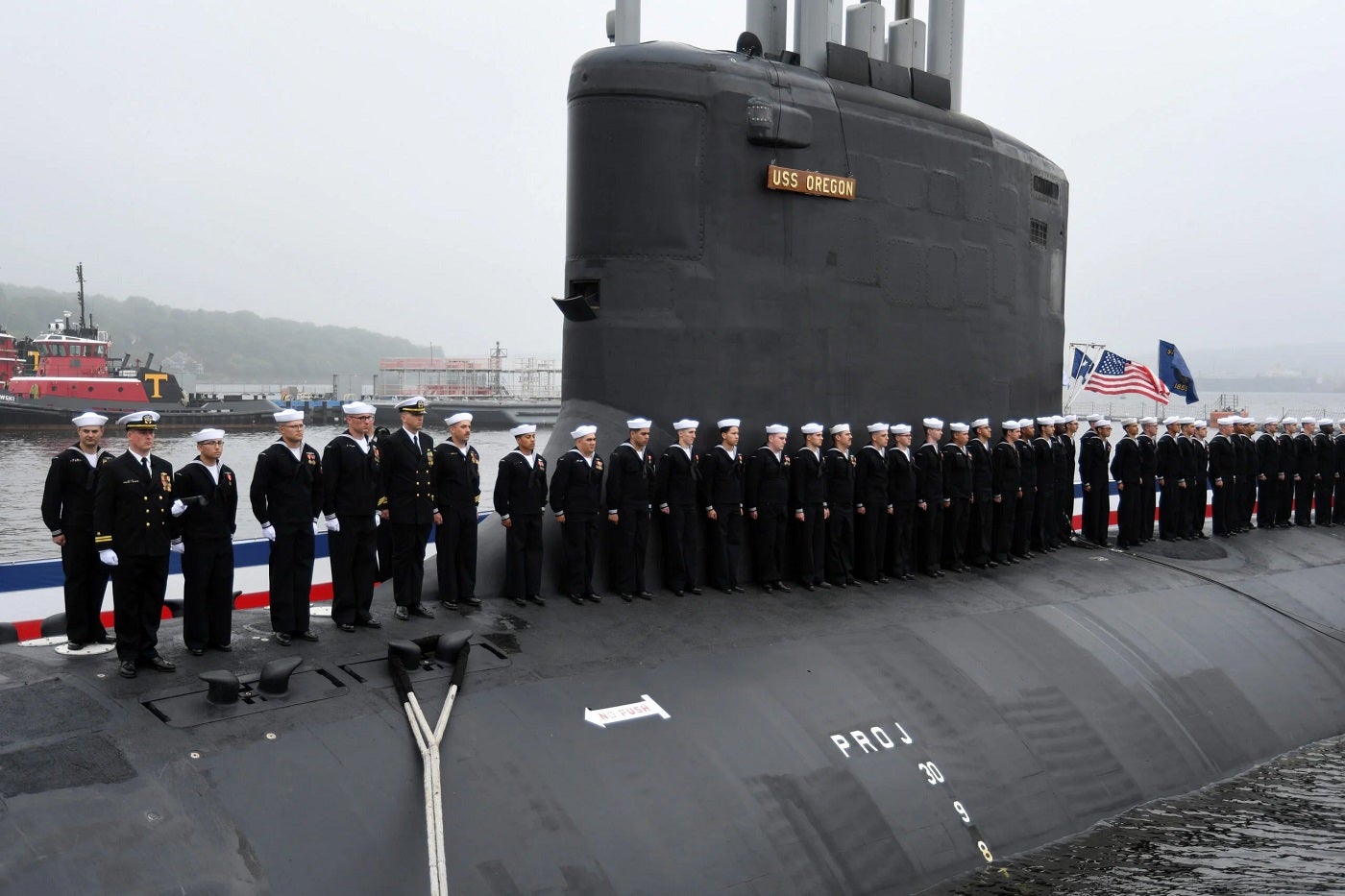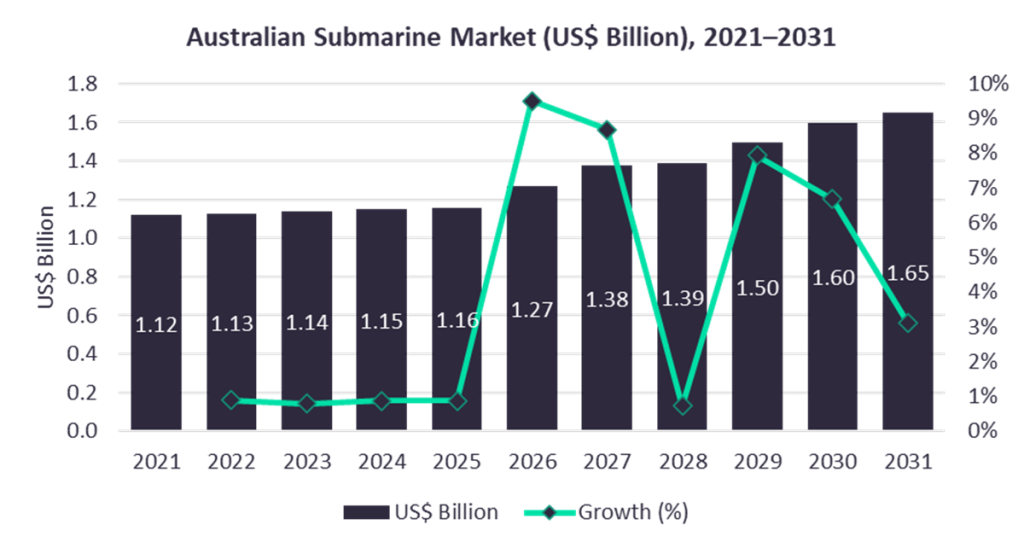
It is expected that AUKUS will announce the next step to deliver nuclear-powered submarines to Australia on 13 March, with the design likely to be based on the US Virginia-class nuclear-powered attack boats.
This follows from the announcement on September 16, 2021 – the first initiative under AUKUS – for Australia to acquire nuclear-powered submarine technology from the US and UK as they leverage decades of experience from their allies.
Australia, the UK, and the US are the three nations in the trilateral AUKUS security partnership, which is intended to combat an increasing number of security challenges in the Indo-Pacific region.
A UK Government spokesperson said: “When we announced the AUKUS Partnership in September 2021, we said there would be an 18-month scoping period to determine the optimal path to procuring Australian nuclear-powered submarines. The outcome of the scoping period is due to be announced soon.”
Australia must receive these submarines, as its fleet has aged and China’s naval threat is growing in the western Pacific Ocean.
Dealing with navy inventory problems of their own
However, the US and UK have arms inventory problems, particularly across land, following both countries’ vast and ongoing support for Ukraine’s Armed Forces as Russia invades Ukraine. Army Technology recently reported that the British Army has just 157 challenger two tanks available for operations from the 227 the UK’s land forces should have ready.
In GlobalData’s Analyst Briefing: The Aukus Pact, one year on, James Marques comments: “It remains to be seen where the US or UK can find the time to build Australia’s boats in the foreseeable future. American shipyards are struggling to meet their schedules – 60 nuclear boats are planned, but these will likely not be completed until the 2040s.
“Britain’s submarine yards at Barrow-in-Furness are slated to move straight from the final two Astute-class boats onto the Dreadnought ballistic missile class, working well into the 2030s.”
GlobalData’s “Australia Armed Forces – Equipment Inventory 2022” shows Australia owns six diesel-electric submarines. The Royal Australian Navy (RAN) currently uses the Collins-class submarines.
Marques states: “Australia currently only operates the Collins–class diesel electric submarines. The defining characteristic of these types of propulsion systems is their inherently limited fuel source and the need to regularly either surface or, more commonly, deploy a ‘snorkel’ above the sea surface to enable their batteries to recharge.
“Doing so makes them highly vulnerable to detection by any number of sensors, such as passive or active radar. A submarine’s primary weapon is its stealth – if you plan to operate in massive, vast, deep oceans such as the Pacific, this is a huge problem.”
The next step to strengthening regional security in the Indo-Pacific
The announcement of the design of the submarine is seen as the next step towards delivering the submarines to Australia and ultimately restricting China’s significant aggressive manoeuvres in the Pacific region. The involvement of the US and the UK, both of which operate nuclear submarines, will lead Australia to become only the seventh nation in the world to use this technology.
According to “Globaldata’s Australia Defense Market 2022-2027”, there are five main options (designs) to consider. The first and second are the US and UK navies’ existing designs, (1) the Virginia Class and (2) the Astute Class.
Then there are the corresponding next-generation attack submarine programs, (3) the SSN(X) and (4) the SSN(R). And lastly, (5) a whole new design leveraging technology from the US and UK.
Marques continued: “It hasn’t been confirmed yet, but it sounds like they might be buying five of America’s Virginia-class submarines in the shorter term but jointly working with the UK on a completely new next-generation design in the longer term.” Marques adds that this would not be too distant into the future, estimating a date in the late 2030s or early 2040s. “Any final new design will probably still include American technology – nuclear submarine building, in general, is a skill only a handful of countries have at all.”
Australian Finance Minister Simon Birmingham has suggested that the cost of the planned fleet of at least eight nuclear-powered submarines will exceed AU$90bn. According to former Australian Prime Minister Scott Morrison, the construction of Australia’s nuclear submarines will start within the next ten years.
With an increase in defence spending, driven by the increase of acquisition programs in the submersible sector and the growing threat from China to Australia’s South Pacific trade routes, GlobalData’s “The Global Submarine Market 2021-2031” report states that in 2021, the Australian submarine market is valued in US currency at $1.1bn and is projected to register a compound annual growth rate (CAGR) of 3.95% each year to reach $1.6bn in 2031, with a cumulative expenditure of $14.5bn over 2021–31.

China’s rapid expansion into Australia’s trade routes
China is the second largest defence market globally and is undergoing rapid expansion to establish superiority in the South China Sea. Given these territorial conflicts and the Chinese government’s intent to project power in the regional maritime domain, the country has understandably invested significantly in submersibles.
The ongoing dispute over the seas and oceans surrounding China is expected to be a vital driver of the naval capability building of various countries in this region.
For instance, the growing Chinese submarine activity in the Indian Ocean has driven India to increase investment in its submarine capabilities, with India procuring six P-75I submarines in a project worth $5.2bn last month.
In Asia-Pacific, the assertive geopolitical stance by China around major maritime regions through its surface and submarine fleet has led to increased spending by countries such as Japan, India and Australia on their anti-submarine warfare capabilities.








